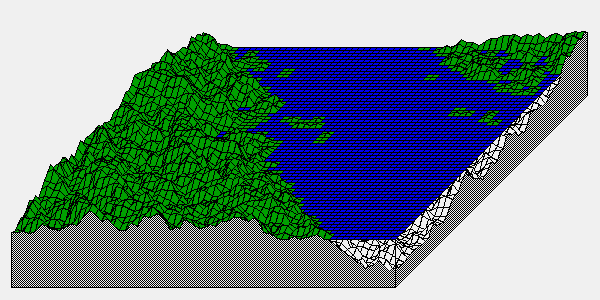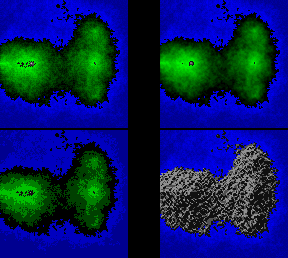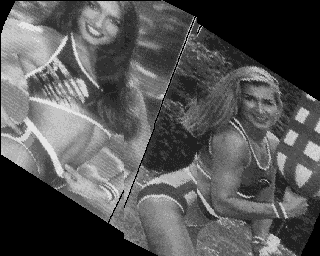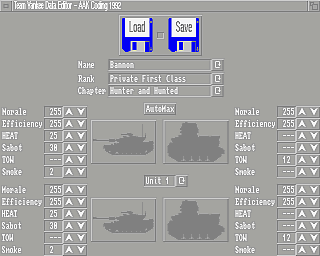
I've been dabbling with AMOS ever since its release waaaay back in the early mists of time. And although I haven't actually finished much, I have had a lot of fun knocking out routines to emulate effects I've seen in demos and games. So here's the (rather small) pick of the crop. I should warn you all that I'm no programming genius, so some of these routines might be totally crap, but they do at least work, and they might give you some ideas of your own (though it's more likely they'll give you some idea of how NOT to write AMOS code :-)
All the archives here are AMOS source only (plus any data files necessary), so you'll need AMOS as well.

Probably most useful as an example of how to quickly create a reasonably realistic random landscape.
Download it (5 KB)

The routine starts with a 4*4 randomly generated map, which is then doubled in size 5 times, resulting in a 128*128 terrain plot. The program then false contours and lightsources the map, just for something else to do...
Download it (3 KB)
It's not *quite* right, but it does show how the idea works, and it is faster than a traditional pixel-by-pixel rotate routine.

The wierdness in the central part of the image is due to some problem with the way AMOS handles the screen. It's NOT apparent when you run the program, only when you try saving the screen...
Download it (1.5 KB)

Download it (8 KB)
Remember the loading sequence from Walker? That rotating cluster of stars that kept morphing back and forth into a message. Well, I just had to try writing my own version, and here it is.
On a 68060/50, the interpreted version will do around 120 stars before dropping below 25fps - compile it and you'll get around 240 stars.
Download it (5 KB)
![]()